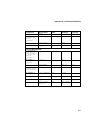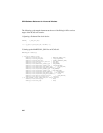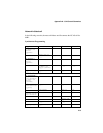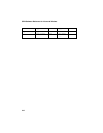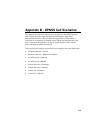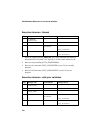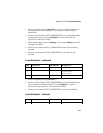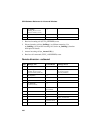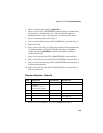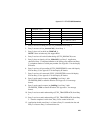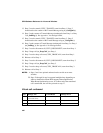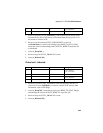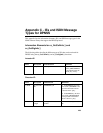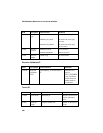
Appendix B - DPNSS Call Scenarios
419
1. Party 1 calls Party 2 by issuing cc_MakeCall( ).
2. Party 1 receives CCEV_PROCEEDING event from Party 2 with indication
that call needs to be diverted to Party 3. Diversion IE will contain the
telephone number of Party 3. See Appendix C for Diversion IE's format.
3. Party 1 disconnects original call to Party 2.
4. Party 1 receives call disconnect (CCEV_DROPCALL) event from Party 2.
5. Releases first call.
6. Party 1 diverts call to Party 3. Calling party number IE should contain Party
3's telephone number. Diversion IE should contain Party 2's telephone
number. See the cc_SetInfoElem( ) function description for details on
sending Diversion IE.
7. Party 1 receives proceeding (CCEV_PROCEEDING) event from Party 3.
8. Party 1 receives divert successful (CCEV_DIVERTED) event from Party 3.
9. Party 1 receives call connected (CCEV_CONNECTED) event from Party 3.
Call successfully diverted.
10. Party 1 receives divert failed (CCEV_DISCONNECT) event from Party 3.
Call was not diverted.
Remote diversion - inbound
Step Dialogic API Action/Result Dialogic Event
1 <-- CCEV_OFFERED
2
cc_SndMsg( )
(SndMsg_Divert, diversion
location: DIVERT_REMOTE)
-->
3 <-- CCEV_DISCONNECT
4
cc_DropCall( )
-->
5 <-- CCEV_DROPCALL
6
cc_ReleaseCall( )
-->
1. Party 2 receives incoming call (CCEV_OFFERED) from Party 1.



